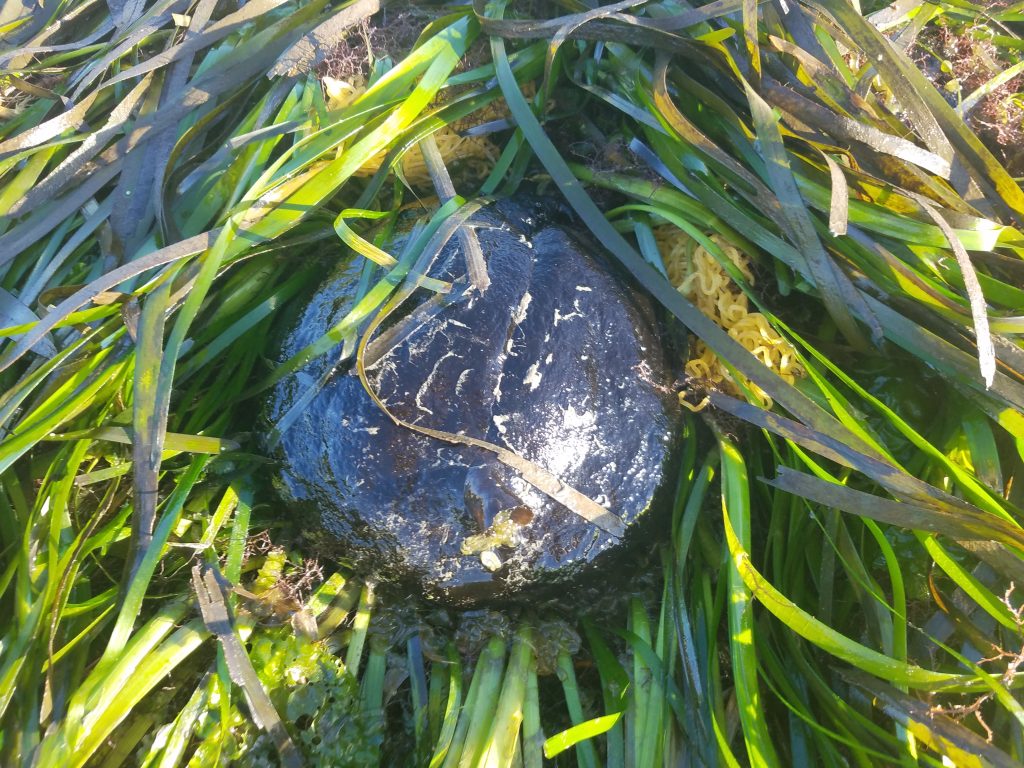The Morro Bay estuary is full of diverse wildlife species that thrive in its clean water. The meadows of eelgrass (Zostera marina) that grow on the bay bottom provide a place for many of these species to shelter and forage for food.
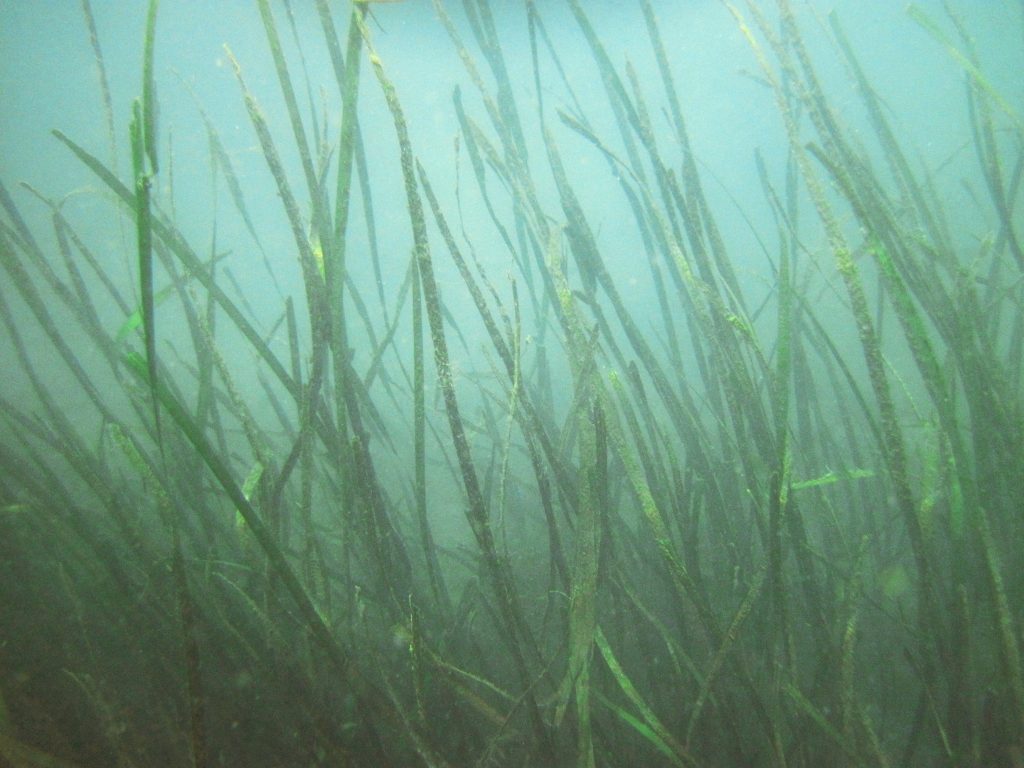
The eelgrass in Morro Bay grows both below the tide line, in areas of the bay that are always under water, and in the intertidal sections of the bay, which are underwater during high tide and above the waterline during low tide.
When the eelgrass is submerged, juvenile fish hide among the long, thin, blades to stay safe from predators. The fish swim to deeper water as the tide goes out, but some animals stay put.
Today, we’re sharing photographs of some of the wildlife we’ve spotted in Morro Bay’s eelgrass beds when the water level is low.
Opalescent nudibranch (Hermissenda crassicornis)
Opalescent nudibranchs are a type of sea slug often found in the Morro Bay estuary. Learn more about them in this edition of the Sea Slug of the Month blog by Robin Agawal.
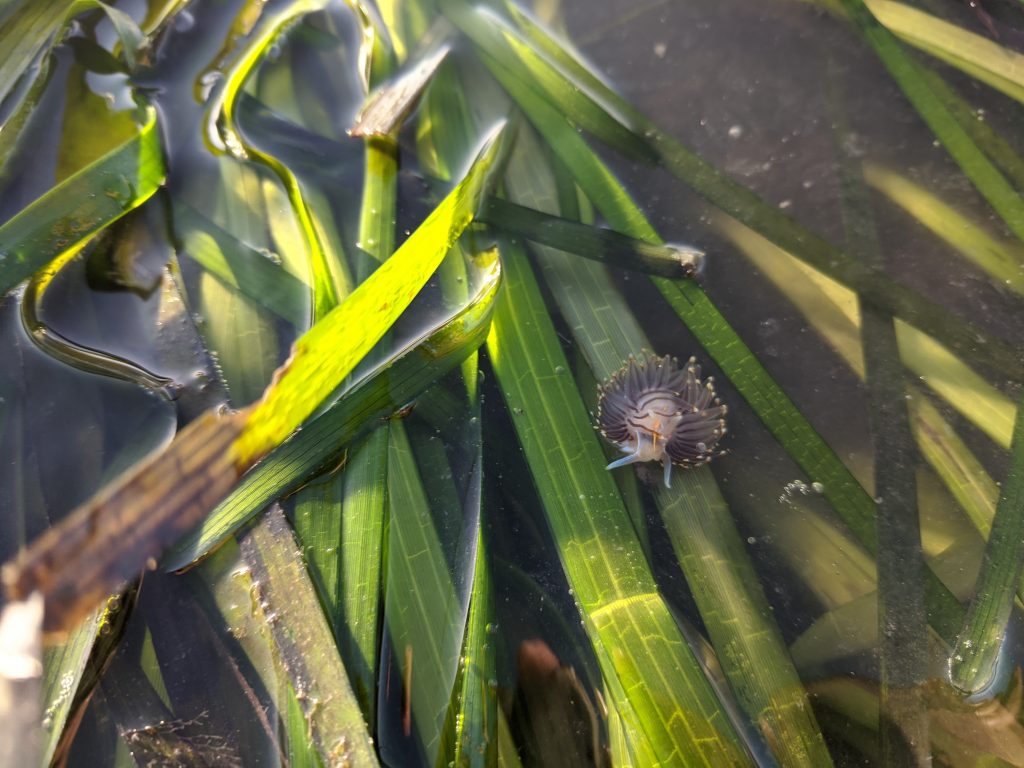
California sea hare (Aplysia californica)
California sea hares are another type of sea slug, much larger than the opalescent nudibranch and significantly less showy. This one is resting just below the water’s surface on top of an eelgrass bed. 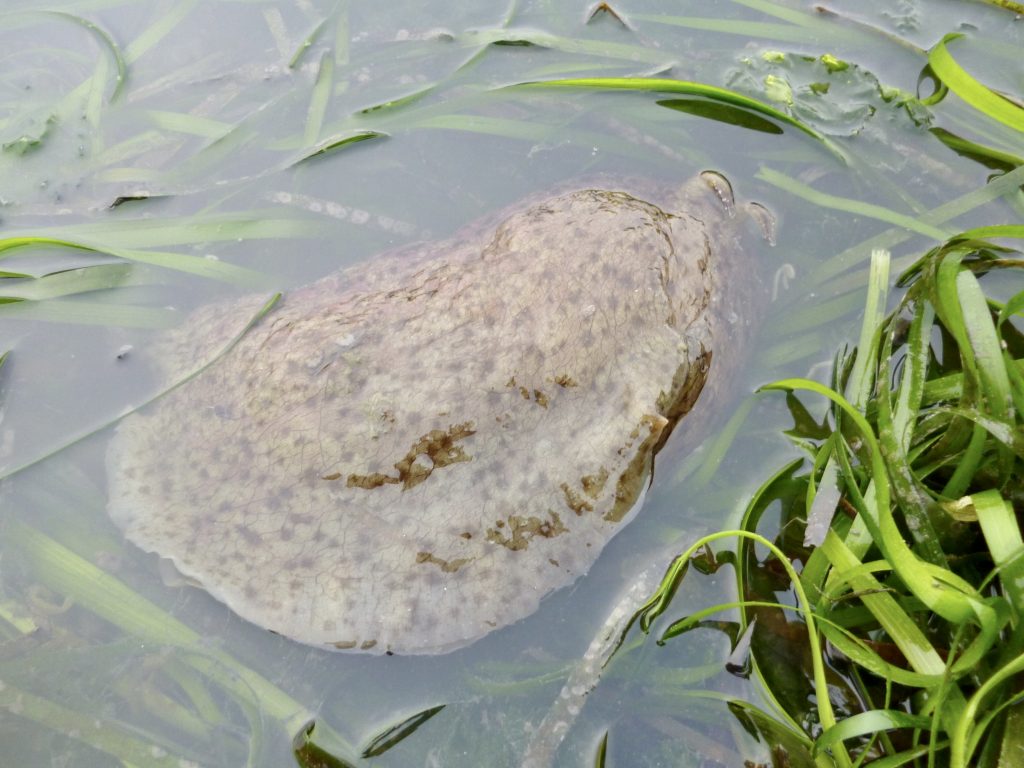
California sea hares look very different depending on their position. When they are fully stretched out and on the move, their rhinophores look a bit like rabbit ears, which is how they got their name.
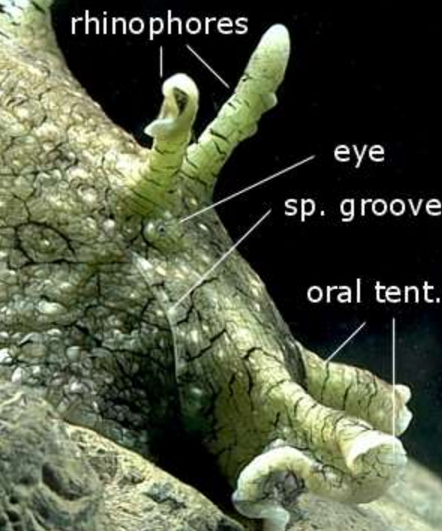
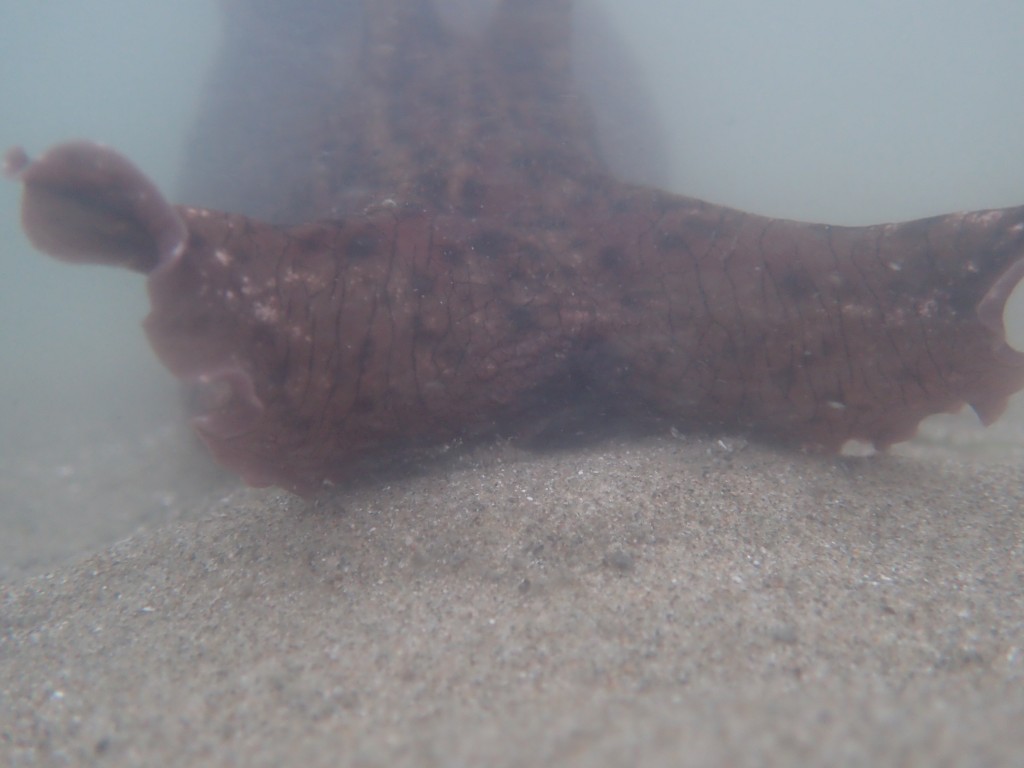
This California sea hare has found itself above the waterline and formed itself into a ball, likely to keep itself as moist as possible while it’s exposed to the air. If you look closely, you can see two of the sea hare’s egg masses. One is just above the sea hare and the other is directly to its right. They look a little bit like lumps of cooked noodles.
Eelgrass sea hare (Phyllaplysia taylori)
One of the common names for this small green sea hare is actually the eelgrass sea hare. Its bright green color and long, vertical stripes provide excellent camouflage when it sits on a blade of eelgrass, munching on even smaller organisms like algae and epiphytes that grow there.
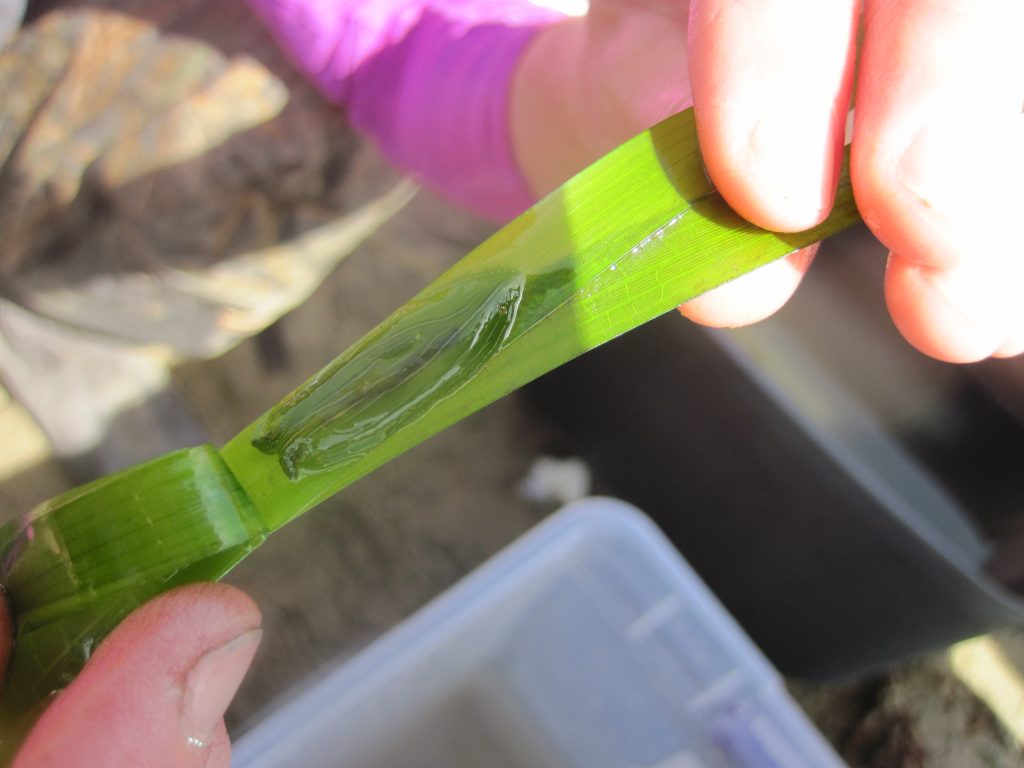
Kelp crab (Pugettia producta)
Kelp crabs are another common resident of eelgrass beds. This kelp crab below is very small. We found it clinging to a blade of eelgrass on the dock before it descended between two planks and back into the water.
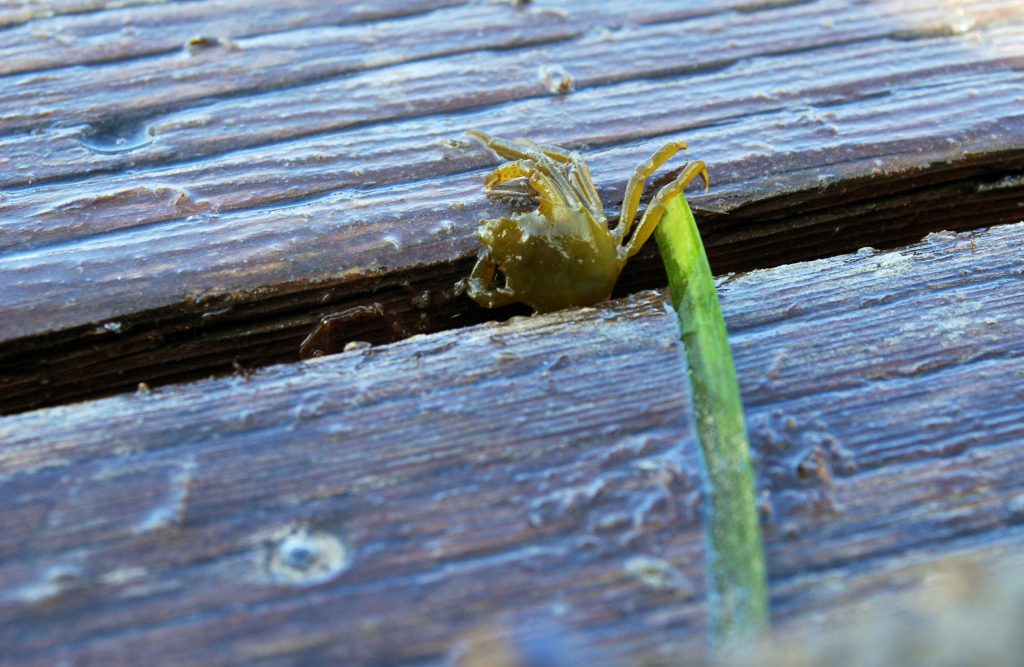
Kelp crabs find both food and shelter in eelgrass beds. They feast on little pieces of dead plant matter and other detritus that they find at the base of the blades, while hiding from larger wildlife species like California sea otters that would love to make a meal out of them.
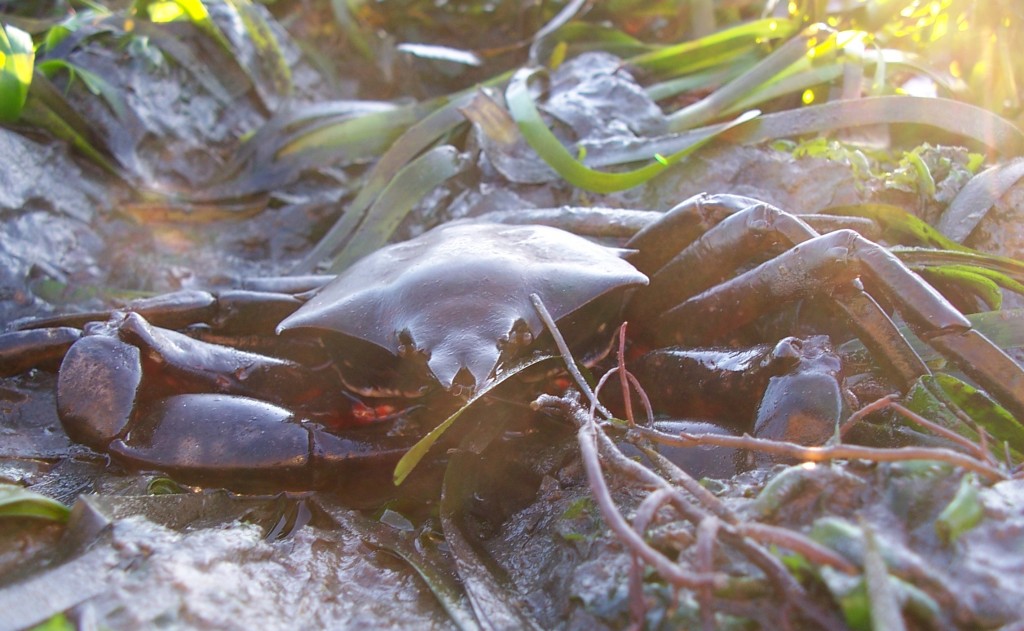
Spotted cusk eel (Chilara taylori)
Our staff often find spotted cusk eels in the eelgrass beds when they are working near sunset. These eels dig burrows that they hide in, tail first, during the day. Then, emerge near sundown to feed.
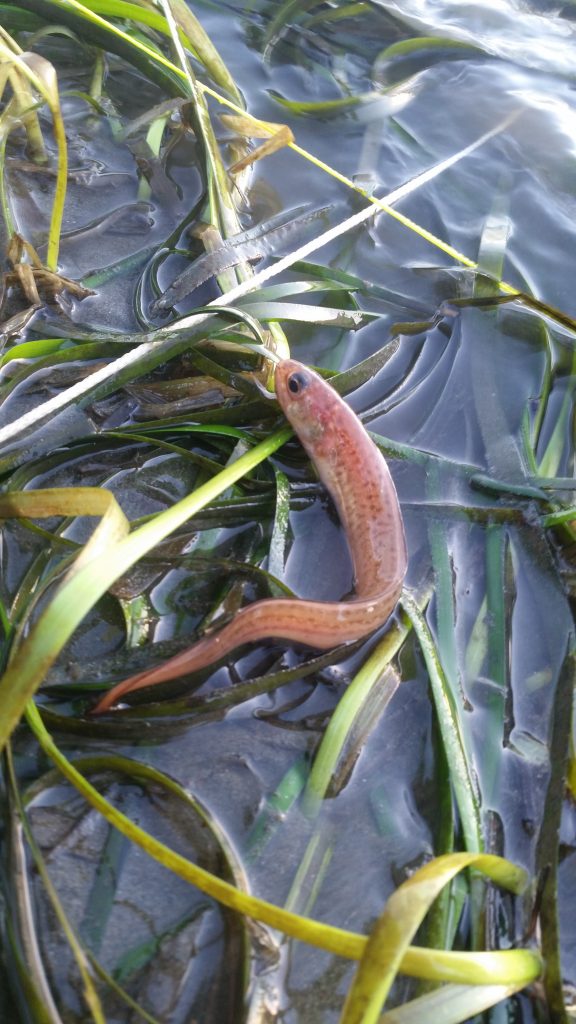
What wildlife have you seen?
What wildlife have you seen in eelgrass beds or other places in Morro Bay? Post your pictures and tag us @mbestuary on Facebook and @morrobaynep on Instagram.
Help us protect and restore the Morro Bay estuary!
- Donate to the Estuary Program today and support our work in the field, the lab, and beyond.
The Estuary Program is a 501(c)3 nonprofit. We depend on funding from grants and generous donors to continue our work. - Support us by purchasing estuary-themed gear from ESTERO. This locally owned and operated company donates 20% of proceeds from its Estuary clothing line and 100% of Estuary decal proceeds to the Estuary Program. Thank you, ESTERO!
- Purchase items from the the Estuary Program’s store on Zazzle. Zazzle prints and ships your items, and the Estuary Program receives 10% of the proceeds. Choose from mugs, hats, t-shirts, and even fanny packs (they’re back!) with our fun Estuary Octopus design or our Mutts for the Bay logo.
Thank you for helping our beautiful, bountiful, biodiverse bay!
